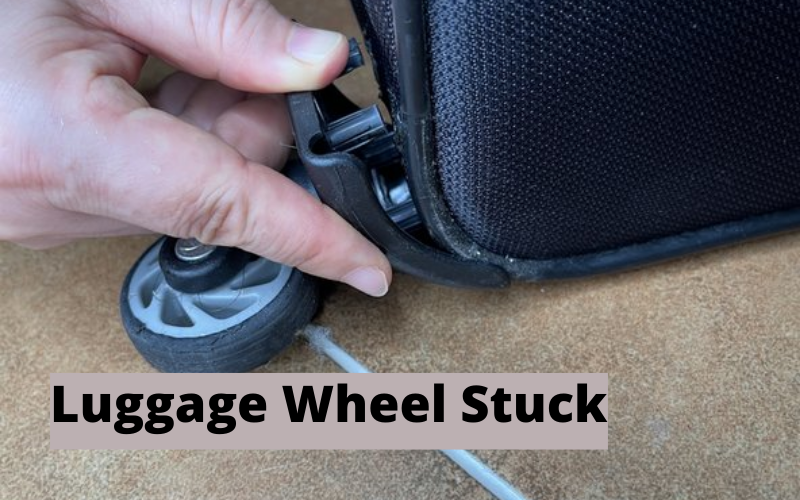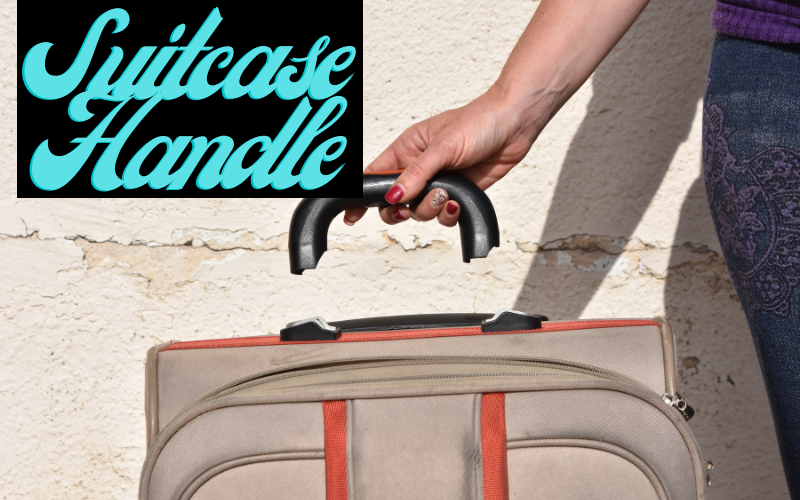There are many ways to lubricate the Luggage Wheel of your suitcase. You can lubricate the wheel by filling up the tires with some extra water to make sure it doesn’t leak out.
You can also take a tissue or a paper towel wrap it around the wheel and squeeze it tightly to add extra pressure to the tire and ensure a better grip. Lubricating the wheels of your suitcase ensures that the wheel is able to move easily and doesn’t get stuck during travel.
The first thing you need to do is make sure that you have a good grip on the wheel so that you don’t fall off the wheel when it’s going up and down. Make sure that you are not wearing any jewelry. As this can get stuck in the wheel and cause you to fall.
You can lubricate the wheel by using a tissue paper towel or a cotton ball. Then make sure it’s soaked in water. If the wheel is stuck. Then it means that the wheel is damaged and needs to be replaced.
In order to lubricate the wheel, you need to make sure that you don’t wear any clothes that are tight around your body as this will make it difficult for you to pull the wheel out of the suitcase. Remove the suitcase from the bag and lift it up. Unlock the wheel and remove the wheel.
Lubricate the wheel by making sure that you apply some extra pressure with your fingers and make sure that you do it in an area where there is no fabric. After you have lubricated the wheel, put the suitcase back into the bag and lock it.
Before You Start, Check If The Luggage Wheel Stuck
If it is stuck you can try to push it by pushing it hard on the ground until it moves.
Another thing to remember is that the more steps there are in the process the longer it takes. So before starting, take some time to check if you’re stuck or if any wheels are stuck.
The next step is to have a plan B. Make sure your backup plan is viable and ready to go in case your plan A doesn’t work. The third step is to get started. That’s the hardest part so do it last. Then, don’t quit until you’ve completed every single step.
Check If The Wheel Is Stuck Due To Dirt Or Rust.
Sometimes the wheel is stuck due to something obvious like dirt or rust. Then simply taking off the wheel is enough to get it back into action. But there are also times when the wheel itself is stuck, so removing the wheel isn’t even an option.
Fortunately, there are two types of wheels you should know about.
The first is the hub-centric wheel. Hub-centric wheels are the easiest type to remove and you just have to take a wrench and tap off the axle.
The second type is called a solid, or banded, wheel, and these are the ones you want to be careful with.
If The Wheel Is Stuck Due To Rust Or Dirt, Use a Little Bit Of Water On it.
If you need to remove a wheel and the problem is caused by rust or dirt. After try using a clean cloth and some warm water. The idea is to loosen up the rusty parts and allow the wheel to turn freely again. Then use a rag to wipe away any excess rust and then put some new grease on it to help prevent the wheel from turning loose again.
If the Wheel Is Still Stuck – You May Have To Remove The Wheel Altogether.
If the wheel is still stuck. You may have to remove the wheel altogether.
The wheel needs to be removed only if the wheels at the back of the car are working but the wheel at the front is stuck. Only in rare cases do I recommend doing this. But if you’re desperate. It’s possible to remove the wheels on your car’s chassis though. It can damage the undercarriage.
If That Is The Case, Take The Wheels Off And Clean Out All The Dust.
So, if that’s the case, take the wheels off and clean out all the dust. There is a lot of dust to be cleaned out here. There’s the dust and grime that have built up over time. The debris of years of neglect and lack of maintenance. Then there’s the dust of the recent renovation.
Next, Put Some New Bearings on The Wheel.
Before you begin make sure you’ve got the right-sized tool. If the bearing is too tight. There won’t be enough clearance between the race and the housing.
If the bearing is too loose. It may be too loose. If you need a replacement set check out our Bearings 101 guide to choosing the right size.
Put The Wheels Back In Place.
The best thing you can do is put the wheels back on. If they’re off. You have no traction.
You don’t know where to go. And that’s the last thing you need to get traction. So start putting the wheels back on.
And, Lastly, Test Out The Luggage Wheel Again.
As we get further into the future. We want to continue to change the way we use wheels. Instead of keeping the same design. We want to add a new layer an extra component that will give our vehicle an advantage.
So we’ll start by testing out the new wheel again. This is another way to test the validity of your hypothesis. We don’t just need to know that something is working. We need to know that it’s working as well or better than the current method of doing things. So as we develop the new wheel. we’ll constantly test it to see if it really does give us that advantage.
We’ll constantly test it to see if it works and, at the same time. We’ll keep looking for ways to improve it. As we continue to improve it, we’ll keep testing it to see if it really does give us that advantage. Once we’ve figured out how to mass-produce the wheel.
Vijay Chauhan is a dedicated traveler, luggage enthusiast, and the mastermind behind a popular website focused on providing valuable information and insightful product reviews for all things luggage-related. With more than 12 years of travel experience under his belt, Vijay has journeyed to over 45 countries, giving him a wealth of firsthand knowledge on the importance of dependable luggage and practical travel gear.




